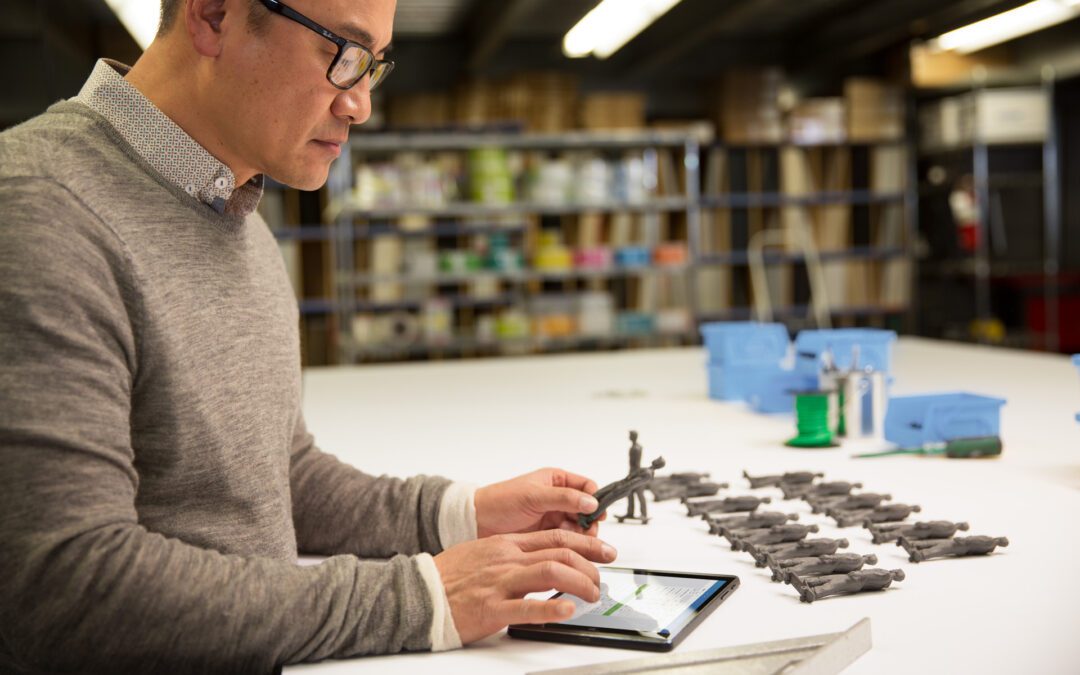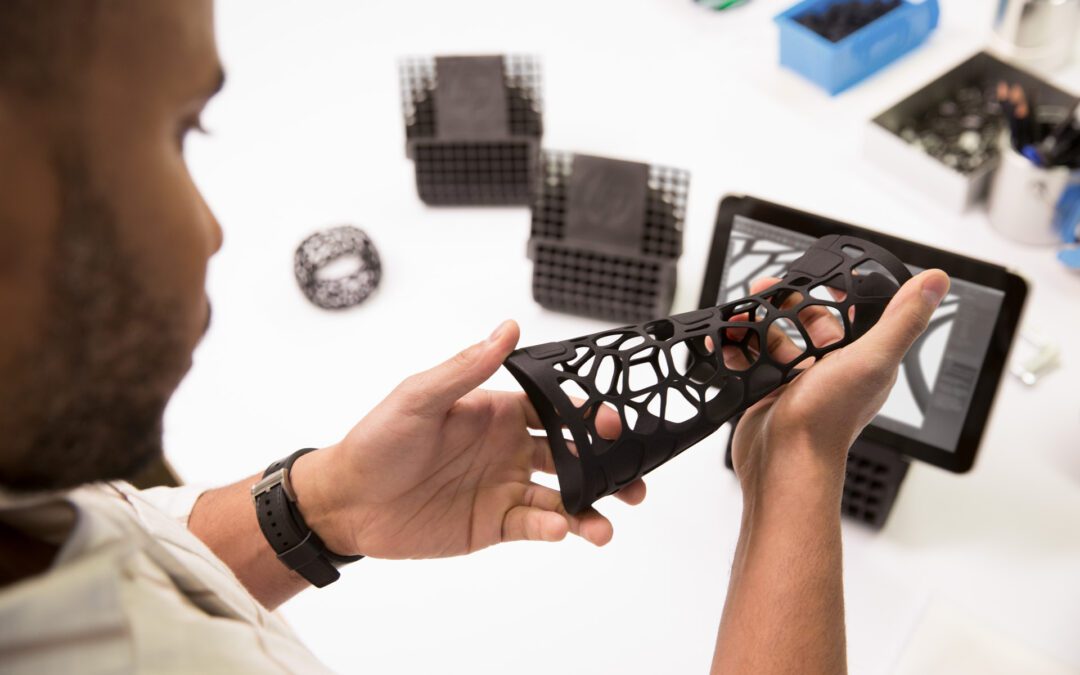Several exciting trends and innovations are poised to shape the future of powder bed 3D printing. In this blog post, we explore the latest advancements and future trends in powder bed 3D printing technology.
The recent advancements in powder bed printing
1. Enhanced materials
One of the most significant advancements in powder bed 3D printing is the development of new materials with enhanced properties. Researchers and manufacturers are continuously exploring new alloys and composites to improve the strength, durability, and thermal resistance of 3D printed parts. For instance, high-performance metal alloys such as titanium and Inconel are becoming more accessible, enabling the production of components that can withstand extreme conditions.
2. Improved printing speeds
Speed has always been a critical factor in the adoption of 3D printing technologies. Recent innovations have focused on increasing the printing speed of powder bed systems without compromising quality. Techniques such as multi-laser systems and advanced scanning algorithms have significantly reduced print times, making the technology more viable for mass production. As a result, industries can now leverage powder bed 3D printing for larger-scale manufacturing processes.
3. Greater precision
Precision is paramount in industries such as aerospace and healthcare, where even the smallest deviation can have significant consequences. Advances in laser and electron beam control have improved the accuracy of powder bed 3D printing systems. Enhanced software algorithms and real-time monitoring systems ensure that each layer is printed with exacting precision, resulting in parts that meet stringent quality standards.
Trends to watch
1. Increased adoption in aerospace
The aerospace industry has been at the forefront of adopting powder bed 3D printing, and this trend is expected to continue in 2024. The ability to produce lightweight, high-strength components with complex geometries makes this technology ideal for aerospace applications. Additionally, the aerospace sector’s stringent regulatory standards align well with the precision and reliability offered by powder bed 3D printing.
2. Expansion in the medical sector
The medical and healthcare sector is witnessing a surge in the adoption of powder bed 3D printing for the production of custom implants, prosthetics, and medical devices. Biocompatible materials and precise manufacturing techniques ensure that these components meet the highest standards of safety and functionality. In 2024, we can expect further advancements in bioprinting, enabling the creation of more complex and functional tissue structures.
3. Growth in the automotive industry
The automotive industry is increasingly leveraging powder bed 3D printing to produce lightweight and high-performance parts. This technology allows for the rapid prototyping and production of custom components, reducing development times and costs. As electric vehicles (EVs) become more prevalent, the demand for innovative 3D printed parts, such as battery components and lightweight chassis parts, is expected to rise.
4. Advancements in consumer electronics
Consumer electronics manufacturers are exploring powder bed 3D printing to create intricate and miniaturized components. The technology’s precision and ability to produce parts with fine details make it ideal for producing housings, connectors, and other small electronic components. As the trend toward miniaturization continues, powder bed 3D printing will play a crucial role in meeting the industry’s demands.
5. More focus on sustainability and recycling
Sustainability is becoming a critical consideration in manufacturing, and powder bed 3D printing is no exception. Efforts to improve the sustainability of this technology include the development of recyclable materials and more efficient powder recycling systems. These innovations not only reduce waste but also lower the overall environmental impact of 3D printing processes. In 2024, we can expect to see more eco-friendly materials and practices being adopted in the industry.
Innovations to watch
1. Hybrid manufacturing
Hybrid manufacturing systems that combine powder bed 3D printing with traditional manufacturing techniques are gaining traction. These systems offer the best of both worlds, enabling the production of complex parts with high precision and the efficiency of traditional methods. For instance, hybrid systems can be used to print complex geometries and then machine them to achieve tight tolerances and smooth finishes.
2. AI and machine learning
The integration of artificial intelligence (AI) and machine learning (ML) in powder bed 3D printing is set to revolutionize the industry. AI and ML algorithms can optimize printing parameters, predict potential issues, and provide real-time adjustments to improve print quality. This technology also enables predictive maintenance, reducing downtime and enhancing the overall efficiency of 3D printing systems.
3. Enhanced post-processing
Post-processing is a crucial step in the 3D printing workflow, ensuring that printed parts meet the desired specifications. Innovations in post-processing techniques, such as automated powder removal and advanced surface finishing processes, are improving the quality and consistency of 3D printed parts. These advancements reduce the need for manual intervention, resulting in faster and more reliable post-processing.
4. Multi-material printing
Multi-material powder bed 3D printing is an emerging trend that allows for the creation of parts with varying properties within a single print. This capability is particularly valuable in industries where components must possess different characteristics in different areas. For example, a single part could have sections with high strength, flexibility, and thermal resistance, all printed in one process.
5. Digital twins and simulation
Digital twins and simulation technologies are becoming integral to powder bed 3D printing. Digital twins are virtual replicas of physical objects that can be used to simulate and optimize the printing process. These simulations help identify potential issues before printing begins, reducing the likelihood of defects and improving overall efficiency. In 2024, we can expect to see more widespread adoption of digital twins in 3D printing workflows.
Conclusion
Advancements in material properties, printing speeds, precision, and post-processing techniques are driving the technology forward. The increased adoption of powder bed 3D printing in aerospace, medical, automotive, and consumer electronics industries highlights its versatility and potential.
Innovations such as hybrid manufacturing systems, AI and machine learning integration, multi-material printing, and digital twins are set to revolutionize the industry. These advancements will not only enhance the quality and efficiency of 3D printing but also expand its applications across various sectors.
For manufacturers and businesses looking to stay ahead of the curve, embracing these trends and innovations in powder bed 3D printing is essential. By staying informed and adapting to the latest developments, companies can leverage this transformative technology to achieve new levels of performance, efficiency, and sustainability.


